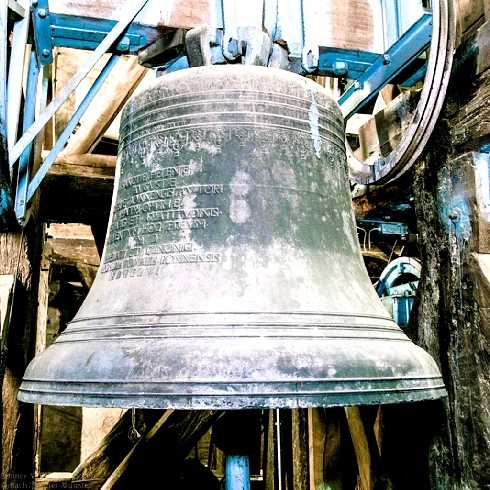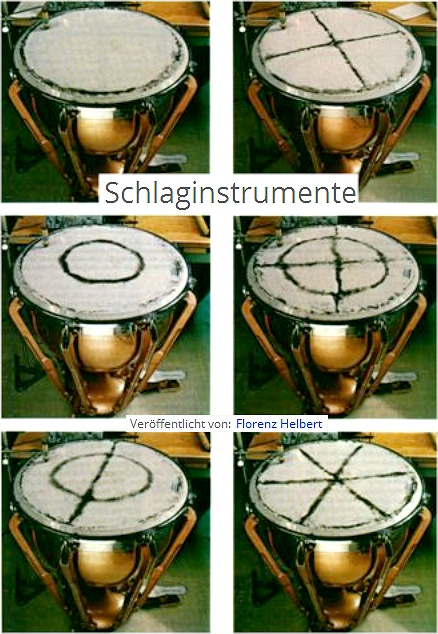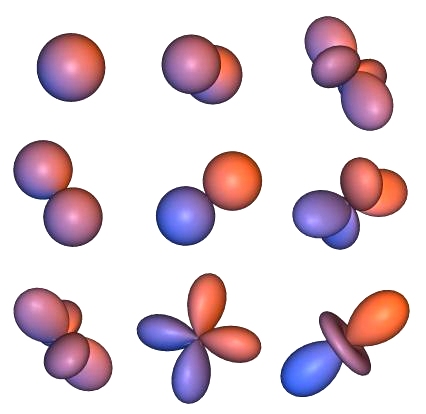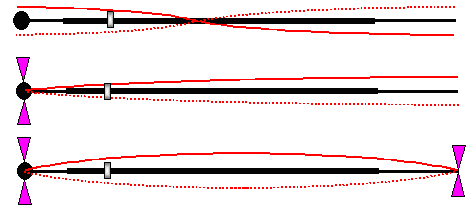| | |
12.3.8 Vibrations |
| |
The Basics
|
 |
In most of the modules in this section your sword was treated as a "rigid
body". It could not deform or change its shape in any form. From a Materials Science point of view it was a boring
dead object with only 2 boring properties: mass and shape, i.e. mass distribution. Your sword, however, is at least an elastic object. It deforms elastically to some extent when forces are applied. Worse, it even
may deform plastically or even fracture but this we will still neglect. |
|
 |
The elastic properties we cannot neglect any longer because they are the reasons
for the vibrations of the blade (and the handle) you may encounter whenever you hit
something sufficient hard. You may see the blade actually vibrating and you will feel vibrations in your hand. If your life
depends on your sword (and your ability to wield it), you will pay a lot of attention to this subject since it is a major
point (and problem) in a sword fight. |
 |
So what can I tell you on this subject? Certainly that it is
very complex if you want to look at it quantitatively, i.e. derive numbers. That's why I'm keeping this short and qualitative.
Let's start with an experiment. Hold your sword up and hit the blade on its flat part hard with a hammer or something.
Or simply throw it down on the ground. Changes are that you will see the blade vibrating roughly like this |
| |
 | | Vibrations (Sword seen sideways) |
|
|
 |
We see what is called a "second
harmonic" and the question is what this means. And why we don't see the first or seventeenth harmonic. The we have tow more special points in the sword, called "vibrations
nodes" in the picture above. How do they relate to all the other points that we already discussed, e.g. the percussion point? |
 |
Tough questions. Let's start by considering in a very general way what will happen to (reasonable)
objects if they are shaken by something with a given frequency v. Take your spouse and
shake him because he deserved it for one reason or the other. The frequency then is rather low and you spouse will just
wiggle with the frequency you employ. The second you stop shaking, he will stop wiggling. This is because the wiggles or
oscillations he performed while forced are heavily damped, i.e. decay rapidly without external influences. Every oscillating
body will stop oscillating sooner (heavy damping) or later (small damping) when the forces causing the oscillations are
stopped. If you're not sure about the meaning of terms like frequency, wavelength, destructive interference and so on, consult
the basic module outlined below. |
|
 |
If strong or weak damping is experienced depends on the oscillation frequency, the objects
geometry and the material properties of the object. In the case of your spouse, the material properties dominate by far
and cause heavy damping at all (reasonable) frequencies. The reason for this is simple: your husband is a slime bag! You
knew that all along but now you have the irrevocable proof. There is no stiffness or hardness in his body (at least most
of the time and in most of the body), and that always causes heavy damping. |
|
|
 |
So let's look for something more rewarding then your spouse when you shake it.
A bell, for example. Something like this: |
| | |
 |
| Big bell |
| Source: Internet at large |
|
 |
In order to save time, we don't just shake it with one frequency, then with another
one and so on to figure out its response, we shake it with many superimposed frequencies in parallel. Any physicist will
tell you that this amounts to hitting it with a hammer. If you watch closely (very closely) you will see that the bell vibrates
with all frequencies while you hit but that right after the hit, vibrations with most frequencies "die out", i.e.
are heavily damped and disappear, while a few with some particular frequencies last for quite a while.
You know that
because you hear it. The bell rings with a well-defined pleasant tone after being hit with a hammer or something (in contrast
to your spouse who won't ring or produce pleasant tones of any kind upon being hit with a hammer). The vibrating bell makes
the air around it vibrate too, and that is what you hear as long as the frequencies are in the auditory region of roughly
20 Hz to 20.000 Hz. The bell rings with a clear tone or basic frequency (plus a few "harmonics") and not with
all the frequencies that were contained in whatever caused the vibrations. The reason behind this phenomena is that only
some particular and special frequencies, the "Eigenfrequencies" of the bell,
can "live" in there for a long time (several seconds instead of just milliseconds for all the other frequencies).
You might say that all frequencies except a few Eigenfrequencies are heavily damped. Two questions emerge:
- What determines the Eigenfrequencies of the bell (or any other object, in particular musical instruments)?
- Why are all other frequencies heavily damped?
|
|
 |
It's actually only one question, just asked in different ways. The answer is simple
in principle:
- Besides Young's modulus of the material (and a few other minor material contributions), it is the shape,
the geometry of the object, that determines the Eigenfrequencies.
- All frequencies besides the Eigenfrequencies cancel themselves by "destructive" interference and therefore
disappear very quickly
Easy enough in principle and devilishly difficult to calculate for non-trivial geometries in more than one dimension. |
 |
Now we know that all "elastic" or "hard" objects, including
your sword but not you slime-bag spouse, can vibrate with some special Eigenfrequencies. They do so in what is called "Eigenmodes
". A vibration means that some points on the objects are moving back and forth
with the Eigenfrequency of the Eigenmode but not necessarily that all points do this.
In fact, some points will not move at all - we have "nodes" of no movement. |
|
 |
Another strange word. "Eigen"-frequency,
"Eigen"-mode (not to mention Eigenvector, Eigenvalues, and so on. Well, you
just experience mixed German - English words. "Eigen
" is German and means "own" in both sense of the english word: it's your own and you own it. Just a little
historical reminder that large parts of modern Math and Physics were originally conceived in the true language. |
 |
For one-dimensional systems like strings the nodes correspond to points
on the string; this can be seen in the picture above. For two-dimensional objects like
the drumhead of drums, the nodes are lines. It looks like this: |
| |
 |
The nodes (black lines) on a vibrating drumhead
Made visible by coating it with a black powder that collects in the nodes. |
| Source: Internet; see inset in the picture |
|
 |
Looks complicated, is complicated. But you have seen nothing yet. Look at the
picture below, showing the nodes for a lot of Eigenmodes of a vibrating square blade: |
| |
 |
The nodes on a vibrating square plate
Pretty, but try to calculate that! |
| Source: As above |
|
 |
The real fun, however, starts when you look at three-dimensional objects like
your sword. Before we do that we give something much simpler a quick look: A hollow sphere. Think of an ocarina if you like
to consider musical instruments. Its Eigenmodes now produce surfaces
of no vibrations (or alternatively maximal amplitudes of the vibrations). It look like this: |
| |
|
 |
| Some Eigenmodes (known as spherical harmonics) "living" in a sphere |
| Source: "Kugelwellenfunktionen"; basic (advanced) math stuff |
|
|
 |
Some of you now might feel that they have seen a picture like this before, just
in a completely different context. Well, yes. Above you actually get a glimpse into the basics of quantum mechanics. Look
it up here. |
 |
Three last words before we look at the vibrations of a sword. |
|
1. |
There is always an Eigenmode with the lowest frequency. We may call that the fundamental mode or frequency. It defines often (but not always) the musical note or
pitch you hear. The Eigenmodes with higher frequencies we sort according to frequency and call them first, second, third,
... harmonics. In simple systems like vibrating strings their frequency is doubled, trebled and so on relative to the fundamental
frequency. |
|
2. |
The Eigenmodes of a given body depend to some extent on the confinements (boundary
conditions in math lingo) of this body. You might hold the hilt of your sword in a vice to study its vibration modes, i.e.
forcefully reducing the amplitude of any vibrations to zero a this defined point. You might also "clamp" the tip,
any point in the blade, or nothing at all. You will get different Eigenmodes and different Eigenfrequencies. The picture
below gives an idea for this. In the middle you have a mode sometimes called "diving board" mode. |
| |
 |
| Fundamental Eigenmodes of a (schematic) sword seen sideways with different "boundary
conditions" |
|
|
3. |
Vibrations are not restricted to "up and down" as shown in all those
pictures. The blade could also rotate rhythmically (torsion vibrations) or get periodically shorter and longer. This is
not really going to happen in any appreciable way with a real sword -but it is a possibility. |
 |
All these possible vibration states are Eigenmodes with some Eigenfrequency. And
yes, it is fairly complicated. It gets even more complicated when you ask which of these many possible modes actually get
"excited" and live for some time when you do something to your sword, like hitting something with it.
But
now to the two good news: . |
| |
|
1.
Forget most modes. The important ones
are the fundamental modes
and a few low-order harmonics
2.
It is sufficient to treat swords as
one-dimensional objects
|
|
| |
| |
| |
Vibrations of Your Sword |
 |
What can I tell you about the vibrations of your sword? Not all that much. First
of all it is rather complicated as all the stuff above should have made clear. Second, doing the full theory of your swords
vibration modes and so on is possible but involved. You need a computer and powerful software. Vincent Le Chevalier can
do it 4); an example of his work is shown below. If the results help you very
much in your day-to-day experience of wielding your sword is open to question. Not only does the way you move and hold your
sword influence what is going on vibration-wise, what you perceive is highly subjective and thus cannot be predicted by
theory. The rather heated ongoing discussion in various forums bears witness to this.
In what follows I just run you
through some points that are important to understand the topic and to put it into perspective with the other properties
of a sword. |
 |
The first point to notice is that usually just the basic modes of vibration perpendicular to the blade are considered, as shown in the picture below on the left. Let's call
that side-to-side oscillations or simply blade oscillations.
It is easy to make your sword vibrate that way: Hold it around the cross guard and hit the pommel hard with your hand. It
will vibrate as shown in the right-hand side of the picture below. This is a screen-shot from a very useful Youtube Video
2), one of many posted by Matt Easton.
You should definitely see it |
| |
|
 | | Vibrations (Sword seen sideways) |
Part of a picture from Peter Johnsson / Le Chevalier's work 1)
Reproduced with gracious permission of the authors. |
Matt Easton of Schola Gladiatoria in one of his Youtube videos 2) |
|
 |
The drawing illustrates what is know as the "second
harmonic". It is "second" because it has two nodes. It is also considered to be the major vibration
mode in swords. Matt Eaton's sword in the picture seems to be doing a "diving-board mode" but in the video you
see second harmonics too. Note that modes can coexist; you typically may find several modes superimposed.
The frequency
of side-to-side or blade vibrations in low-index modes like the second harmonic is rather
low, at best around 10 HZ or so. Definitely far below anything that would make a kind of musical noise. No singing sword
3) here.
You induce these modes by any (sudden) force with a component vertical to the blade, for example
when you hit something not exactly at a right angle relative to the blade and away from the two nodes. Of course, when you
deflect your opponents swing with the flat of your blade, you will excite these modes too.
What these modes really
look like can be seen very nicely in some computer simulations done by Vincent Le Chevalier 4): |
|
 |
| Calculated blade vibrations for a sword with and without pommel and crossguard
|
| Source: Adopted from Le Chevalier's work 1)
with friendly permission. |
|
 |
Shown are the vibration maximums for the 2nd, 3rd and 4th mode (somewhat exaggerated).
You see that the nodes for the 2nd mode of the pure blade are very roughly at about 1/4 and 3/4 of the blade length and
that adding cross guard and pommel changes the location of the hilt nodes more than that of the blade modes.
The simulation
also shows how the positions of the center of mass (COM) and of the percussions points (for two fixed hilt pivot points)
changes. Quite a bit! With a "proper" pommel and cross guard, the COM moves appreciably closer to the hilt, increasing
the agility of the sword, while the blade percussion point move out to a position pretty much identical to the blade node.
That is a bit fortuitous but exactly what you want. |
| |
 |
We get a first impression that the kind of hilt you supply is of prime importance to the dynamic
performance of your sword. I will get back to this later in more detail. |
 |
The major point is that we now have two more
major points on our sword (besides the two trivial ones giving the beginning and end of the sword). We have the position
of the hilt node and of the blade node addition to the three points discussed before (pivot point, center of mass, percussion
point). The claim is that any stick or sword has these five important points! Can that be true? That's where a lot of confusion
starts. So let me clarify: |
|
For a simple homogenous stick, three out of the five points are "trivial"
. The center of mass is exactly in the middle, and the nodes of the second harmonic are found at 1/4 and 3/4 of the length.
That leaves two "special" points: An arbitrarily located pivot point of your choosing and the corresponding percussion
point.
For a real sword this is different. All five points are special. They are related, of course, because the defined
geometry of a sword determines most of the calculations. There is, however, no obvious relation. |
|
 |
Yes, you got it, I do actually claim |
| | |
Vibrations nodes are generally not at the
position of the percussion point!
|
|
 |
This is often claimed or somehow mixed up because it is desirable that the percussion
point and the blade vibration node coincide. That has caused sword makers to design their swords in such a way that these
points actually are close to each other. This is possible (see the picture above) but
not necessarily an easy thing to do. Producing such a "harmonically balanced"
sword, as it is sometimes called, needs either centuries of experience and "know-how" or a powerful computer plus
somebody who can program it with the required physics. |
|
 |
Why would we want these two points to be close together (and not too far from
the sword tip)? Because if you hit your target a the percussion point you feel no force in your hand and deliver substantial
if not maximum impact. When you hit your target at the position of the node you do not excite (second order) vibrations
of the blade, hurting your hand and diminishing impact force. So having the points coincide is often a very good idea. But
you have to do this by optimizing the sword design. There is no natural and unavoidable coincidence of these points. |
|
 |
As Michael Tinker Pearce (Sword Maker) puts it in a "Sword Forum International"
contribution: What harmonic Balance does for a sword - prevents shock from being transmitted to the
users hand when striking with the sword. This conserves energy- the sword doesn't 'waste' energy shaking the user even when
the strike lands off of the COM. It also prevents the user from losing control of the sword because of vibration transmitted
to the user's hand. It also minimizes the sword's tendency to damage it's hilt assembly through vibration. All good things!
A sword that is not 'harmonically balanced' is not, in my opinion, a 'good' sword.
Modern experts (like Matt Easton and in particular Geoge L. Turner)
who have given old swords a close look find that pretty much all of them are harmonically balanced while that is not true
at all for many modern "replicas". The may look like the original but their
balance is off. Their percussion point may even be off the blade, e.g. some cm in front of the tip (perfectly possible:
look at the math!) I |
 |
Now I want to promote a new and somewhat disturbing idea. If you excite side-to-side
or blade vibrations as discussed above and then quickly put your ear on the blade, you might actually hear a tone. Maybe
you can even produce a directly audible tone with your particular "singing" sword. That can only mean that you
have some "high-frequency" (e.g. around 100 - 400 Hz) Eigenmodes that can live in your sword in
addition to your very low frequency blade oscillation modes.
The only contender for these modes are "edge-to-edge" vibrations. Something like that: |
| |
|
 |
| Fundamental Eigenmode of "edge-to-edge" oscillations |
|
|
 |
You excite these modes when you hit something with the edge of your blade. They
thus may come more naturally then the side-to-side oscillations from above - but are rarely mentioned! Perhaps because their
amplitude is so small that you don't see it easily - in contrast to the blade oscillations where the amplitude can easily
exceed several centimeters! |
 |
Now to my last point. Maybe you should forget most of what I have written above!?
The claim is: While side-to-side oscillations are showy and bothersome, what you really should worry about are the edge-to-edge
oscillations. They are the ones that "sting" your hand or otherwise impede your performance.
That's the viewpoint
of Geoge L. Turner, who so far has written the most detailed treatise about
sword dynamics. Look up chapter 11; pp 130 - 137pages.
While his viewpoint is still open to some doubt; I do believe that he makes a good and valid point. |
|
 |
So you should worry about the nodes for the second harmonics of the edge-to-edge
vibrations and not about the nodes of the blade vibrations? Yes you should. But not too much, because the positions of the
nodes is likely quite close for most sword geometries. |
 |
I'm stopping here. Much more could be said (for example that so far we treated
a sword essentially as a one-dimensional object). |
| | |
© H. Föll (Iron, Steel and Swords script)








